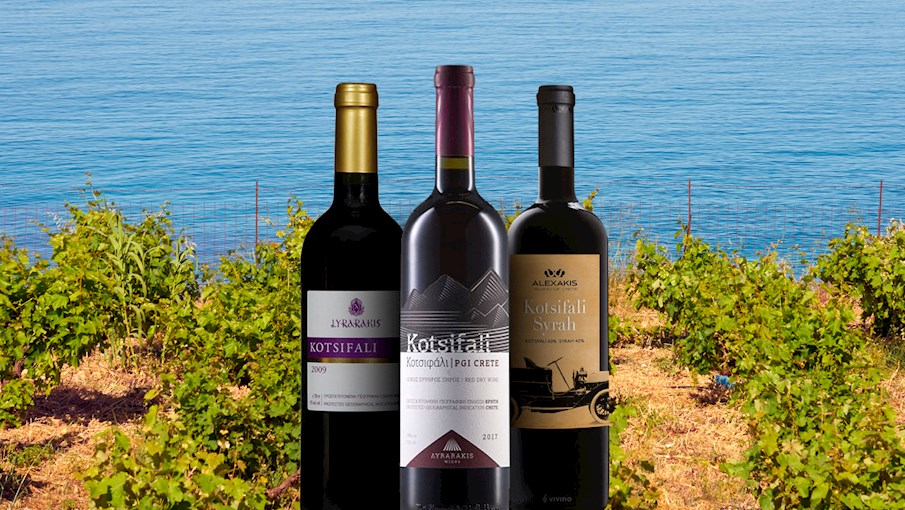Crete, the largest of the Greek islands, is not only renowned for its breathtaking landscapes and ancient history but also for its rich winemaking heritage. The island’s diverse terroir, favorable climate, and centuries-old traditions have fostered the production of exceptional wines. Embarking on the Cretan Wine Trail is a journey through picturesque vineyards, charming wineries, and, most importantly, an exploration of some of the finest vintages Greece has to offer.
A Historical Perspective
Wine production in Crete dates back over 4,000 years to the Minoan civilization, making it one of the oldest winemaking regions in the world. The Minoans cultivated grapes and developed sophisticated wine storage and distribution systems, as evidenced by archaeological findings of ancient wine presses and storage jars. This long history is reflected in the island’s winemaking techniques, which blend traditional methods with modern innovations.
Distinctive Grape Varieties
Crete’s unique grape varieties are integral to the character of its wines. The island boasts both indigenous and international grape varieties, each contributing to the diversity and complexity of Cretan wines.
- Vidiano: Often referred to as the “white queen of Crete,” Vidiano produces aromatic and balanced white wines. Known for its floral and stone fruit notes, Vidiano has gained popularity for its elegance and versatility.
- Vilana: This indigenous white grape is widely planted across Crete. Vilana wines are typically light and crisp, with citrus and herbal aromas. They are perfect for enjoying on a warm Cretan afternoon.
- Liatiko: One of Crete’s oldest red grape varieties, Liatiko produces wines with a distinctive profile of red fruits, spices, and earthy undertones. Liatiko wines can be enjoyed young or aged, showcasing their depth and complexity over time.
- Kotsifali: Often blended with other grape varieties, Kotsifali adds body and richness to Cretan red wines. It is known for its dark fruit flavors, soft tannins, and hints of spices.
- Mandilari: This robust red grape is used to produce full-bodied wines with high tannins and acidity. Mandilari wines are often aged in oak barrels, which adds layers of complexity and depth.
Notable Wineries on the Cretan Wine Trail
The Cretan Wine Trail takes wine enthusiasts through a scenic journey across the island, visiting some of the most esteemed wineries and vineyards.
- Douloufakis Winery: Located in the heart of the Heraklion wine region, Douloufakis Winery is a family-owned estate that has been producing wine for over 80 years. They are known for their commitment to quality and their focus on indigenous grape varieties. Visitors can tour the vineyards, learn about the winemaking process, and taste exceptional wines like Vidiano and Liatiko.
- Lyrarakis Winery: Situated in the picturesque village of Alagni, Lyrarakis Winery is renowned for its dedication to reviving rare Cretan grape varieties. Their wines, such as the aromatic Dafni and the complex Plyto, offer a true taste of Crete’s vinous heritage. The winery offers guided tours, tastings, and the chance to explore their beautiful vineyards.
- Boutari Winery: One of Greece’s most famous wine producers, Boutari, has a prominent presence in Crete. Their Skalani Estate near Heraklion is a must-visit for wine lovers. The winery combines traditional Cretan techniques with modern winemaking practices, producing a wide range of high-quality wines. Visitors can enjoy tastings, tours, and breathtaking views of the surrounding vineyards.
- Manousakis Winery: Nestled in the hills of Chania, Manousakis Winery is a boutique estate that produces organic wines. The winery’s focus on sustainable practices and small-batch production results in exquisite wines that reflect the unique terroir of the region. Their Nostos line, featuring blends of international and indigenous grapes, is particularly noteworthy.
The Tasting Experience
Tasting Cretan wines is a sensory journey that reflects the island’s diverse landscapes and rich history. Each sip offers a glimpse into the unique combination of soil, climate, and tradition that defines Cretan viticulture.
- Exploring Flavors: When tasting Cretan wines, take note of the distinctive flavors and aromas that characterize each grape variety. Vidiano often presents floral and peach notes, while Liatiko may reveal layers of red fruits and spices.
- Food Pairing: Cretan wines are wonderfully versatile and pair exceptionally well with the island’s cuisine. Enjoy a glass of Vilana with fresh seafood, or savor a robust Mandilari with grilled meats and hearty stews. The island’s culinary traditions enhance the wine tasting experience, creating a harmonious blend of flavors.
- Wine Tours and Events: Many wineries on the Cretan Wine Trail offer guided tours and special events, providing deeper insights into the winemaking process and the history of Cretan viticulture. Participating in these tours is an excellent way to enhance your appreciation of the wines and the dedication behind their production.
Conclusion
The Cretan Wine Trail is more than just a route through vineyards and wineries; it is an immersive experience that celebrates the island’s deep-rooted winemaking heritage and vibrant culture. From the ancient traditions of the Minoans to the innovative techniques of modern winemakers, Crete’s wine scene is a testament to the island’s enduring love affair with the vine. Whether you are a seasoned oenophile or a curious traveler, exploring Crete’s best vintages promises to be a delightful and enriching journey.


